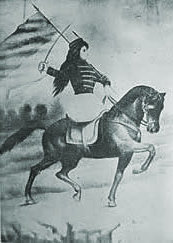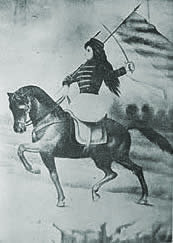
|
Women and Independence in Latin America An exploration of women's involvement in the Latin American Wars of Independence |

|

|
Women and Independence in Latin America An exploration of women's involvement in the Latin American Wars of Independence |

|
Gender:Male
Ethnic origen: White
Events:
| 1753 | - | Bajío | - | Not applicable | - | He was born in Pénjamo, Guanajuato 8 May 1753. |
| 1778 | - | Mexico City | - | Unknown | - | He was ordained. |
| 1803 | - | Guanajuato | - | Unknown | - | He became curate of Dolores. |
| 1807 | - | Guanajuato | - | Unknown | - | He was denounced by the Inquisition for possessing prohibited books. |
| 1810 | - | Guanajuato | - | Unknown | - | He issued the Grito de Dolores on 16 September 1810. |
| 1811 | - | Chihuahua | - | Unknown | - | He was captured on 21 March 1811, taken to Chihuahua and was executed on 30 July . |
Connections:
Enlightenment ideasBiography:
Born in 1753, he was a priest from the small town of Dolores who made the call for revolution on 16 September 1810. He had two children. He was respected by the indigenous community and could speak Indian dialects. He led forces of Indian and Creole troops. He abolished Indian tribute and sought to restore their land, but did not have much Indian support outside the Bajío. He was captured on 21 March 1811 and executed in Chihuahua. (Lynch, xvi-xvii, 306-313)
He was part of a group who discussed enlightenment ideas in Guanajuato. Led by the Spanish intendant of Guanajuato, Juan Antonio Riaño, the group included Corregidor Miguel Domínguez, María Josefa Ortiz, Ignacio Allende, Juan Aldama, and Mariano Absalo. (Rodríguez, 160)
He was ordained in 1778. He translated and interpreted Molière's Tartuffe. His house in Colima was known as "Little France" due to his literary and gambling meetings, and his treatment of everyone as his equal. He became curate of Dolores in 1803. He was denounced by the Inquisition in 1807 for possessing prohibited books, but no other action was taken. On 16 September 1810, he freed and armed prisoners, obtained military support from the Dolores Garrison, took up the banner of the Virgin of Guadalupe, and initiated the uprising against the Spaniards. (Gueda, 640-643)
He belonged to the mason lodge established by Enrique Muñi. Other members included Allende and Miguel Domínguez. (Gueda, 48)
His daughter Agustina is said to have fought beside him, wearing an officer's uniform. (Salas, 26)
He hosted tertulias in Dolores at his home, "Francia Chiquita" from 1804 onwards. Among those who attended were indigenous and castas. (Hamill, 78)
References:
Werner, Michael S. (editor). (1997) Encyclopedia of Mexico
Hamill Jr., Hugh M. (1966) The Hidalgo Revolt: Prelude to Mexican Independence
Lynch, John (1986) The Spanish American Revolutions 1808-1826
Rodríguez O., Jaime E. (1998) The Independence of Spanish America
Salas, Elizabeth (1990) Soldaderas in the Mexican Military: Myth and History